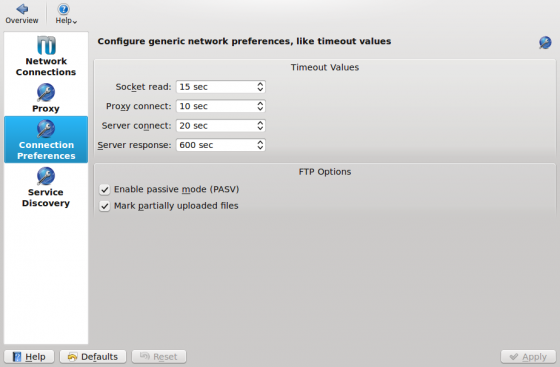Dateiübertragungen
Einführung
Diese Anleitung beschreibt, wie Dateiübertragungen von und zu einem entfernten Server mithilfe der KDE Software Compilation abläuft. Dies schließt unter anderem das Herunterladen von Dateien von einem FTP-Server oder das Sichern von Dateien mittels SSH ein.
The KDE SC does not include a standard FTP client as you may know it from other platforms. There are some third party applications like Kasablanca or KFTPgrabber but they are not yet fully ported to the KDE Platform 4. The good news however is, you don't need such an application to manage files on your remote servers. The KDE platform features a far more powerful technique for dealing with such situations.
Grundlegende Dateiübertragungen
To connect to a remote server you can use almost any KDE application. You may choose the appropriate application depending on the task you want to do. For example, if you wanted to browse a remote server the best choice would be Dolphin or Konqueror. To edit a webpage you can directly use Quanta without the need of a separate FTP application. In this example we will use Dolphin and transfer files using FTP.
Mit einem FTP-Server verbinden
Um sich mit einem FTP-Server zu verbinden, öffnen Sie einfach Dolphin und klicken Sie auf einen leeren Bereich der Adressleiste. Geben Sie nun die Adresse des Servers in die Adressleiste ein. Vergessen Sie nicht das „ftp://“ am Anfang:
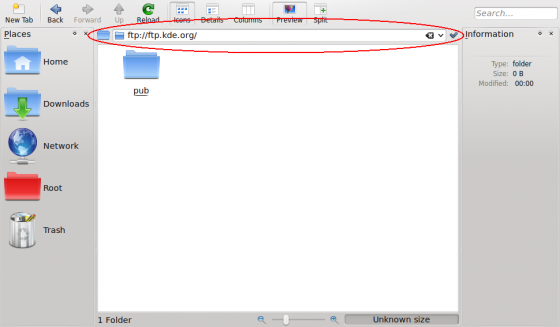
If your server requires authentication you will be prompted for your credentials in a popup dialog. Enter your username and password. If you wish to save them, check the relevant checkbox. Dolphin will store your passwords securely in your KDE Wallet. For faster access you can insert the username and password directly in the address bar using this format: ftp://username:[email protected]; however we do not recommend this, as it is a security risk. Not only is it visible in your location bar, but it is stored in plain text, and so can be easily read by anyone with access to your home folder. Storing the password in KWallet is much safer, providing you have protected your KWallet with a password.
Andere Protokolle
FTP ist nur ein Beispiel der vielen unterschiedlichen Protokolle, die die KDE-Plattform unterstützt. Es gibt weitaus mehr zu entdecken. Um eine Liste aller unterstützter Formate zu erhalten, klicken Sie auf das Häkchen neben der Adressleiste, um die Adressleistenansicht zu wechseln…

...and then on the ftp button at the beginning.
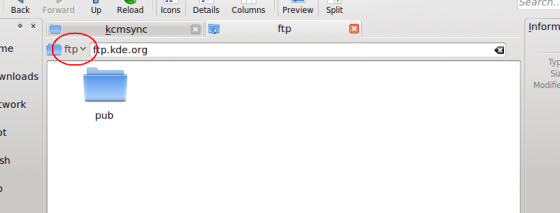
The protocol selector should appear similar as shown on the next screenshot. What protocols are available on your system, depends on which KIO plugins you have installed.
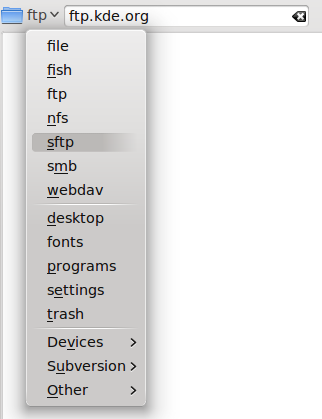
Note: Due to KDE bug #55804, files moved or copied from the local machine to a remote machine via the fish protocol have the wrong timestamps. A workaround is to use SFTP for transferring files to another machine.
Imitate a standalone FTP client using Dolphin
If you want a more standalone-ftp-client like experience you can use Dolphin's split view:
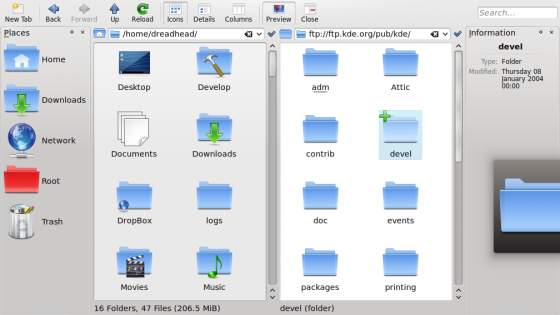
Add a remote folder to your places bar
You can drag and drop a remote folder directly to your places and bookmark it:
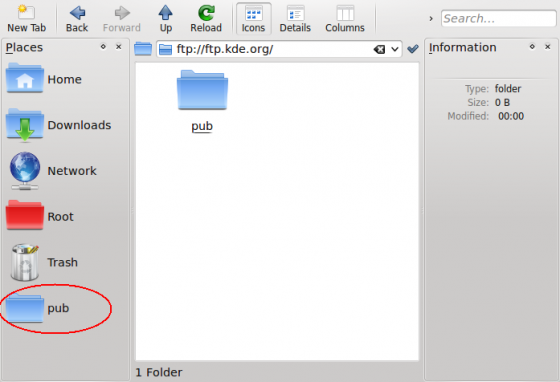
Directly access remote files in other KDE applications
As already said previously, nearly every KDE application is capable of accessing remote files and folders. For example, you can open a remote website directly in Kate by inserting the address in the file open dialog:
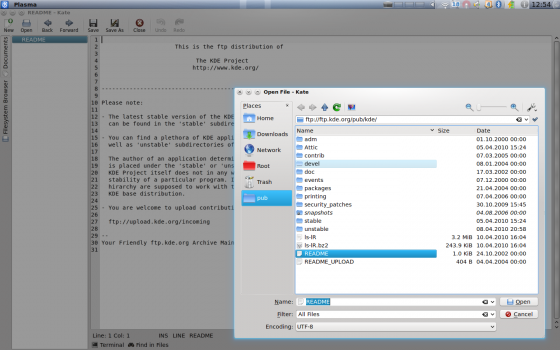
You can now edit the file in Kate. When you click the file will be directly uploaded to the server. That way, you don't need to download files before editing and upload them again after editing.
Changing settings
You probably miss some settings seen in standalone file transfer clients now, such as switching active and passive mode in FTP or timeout settings for your connections. Don't worry, you can find them in System Settings under . The section may be especially useful.
